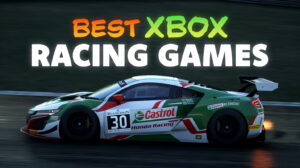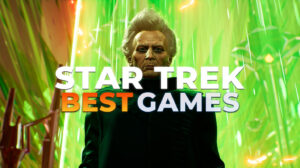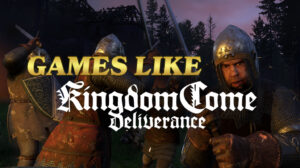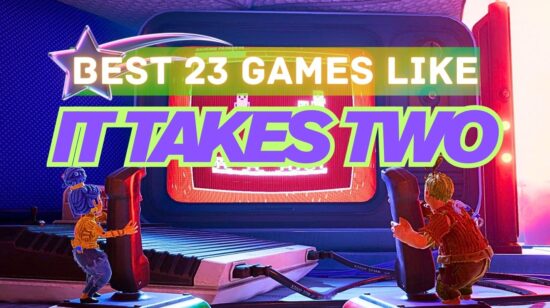10 Best Mortal Kombat Games in 2025

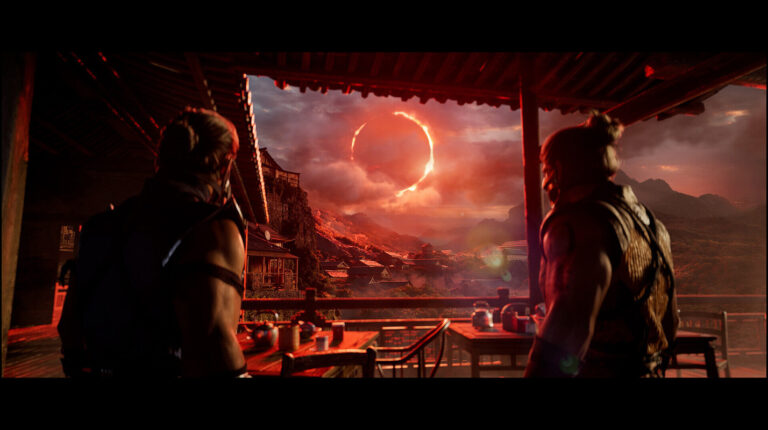
Recent update
This list is regularly updated to match what’s trending and in-demand among gamers.
When I saw the new Mortal Kombat II trailer trending, I knew I had to go back to the games. It crossed 106 million views in the first 24 hours. If that made you want to revisit or start exploring the series, I get it. You’re in the right place.
Since the first game came out in 1992, Mortal Kombat has built a huge world. It’s full of fighters, violent finishing moves, alternate timelines, and stories that stuck with people. Over time, it grew into something bigger. There are comics, shows, movies, and spin-off games. The core series now has 12 main entries, and each one pulls you deeper into its mix of gore, myth, and iconic characters.
But with so many games, it’s hard to know where to start. I’ve been there too. Some players worry they’ll pick the wrong one or feel lost in the timeline. That’s a real issue.
So I put together a list that can help. It’s built around what made each game matter, how it changed the mechanics, told a better story, or gave fans something new. This way, you can jump in without missing key parts. If you want to sharpen your combos, learn the lore, or see where it all began, this guide gives you a clear path through the series.
Jump to:
Our Top Picks for Mortal Kombat Games
Mortal Kombat games are known particularly for redefining the fighting genre as a whole. These introduce innovations, such as character variations or cleaner combo matchups, alongside immersive storylines and unmatched combat intensity to deliver unforgettable experiences.
- Mortal Kombat 11 (2019) – features a refined combat system, with dynamic move sets and a great plotline that presents past conflicts with new challenges.
- Mortal Kombat X (2015) – acts as a bridge between the old games and the new, introducing character variations and more 2.5D elements.
- Mortal Kombat 9 (2011) – a pure reboot that restored traditional MK arcade gameplay, with a straightforward story mode and classic fatalities.
- Mortal Kombat 1 (2023) – expands the character roster with modern fighting mechanics and an extended narrative that builds on established heroes.
- Mortal Kombat: Deadly Alliance (2002) – transitioned into 3D gameplay and added an exploration mode that provided more depth to the story.
10 Best Mortal Kombat Games of All Time
Mortal Kombat has come a long way since its debut in the early ’90s. From pixelated fighters in 2D arenas to modern-day 3D combatants, the franchise has reinvented itself time and time again. But what makes a Mortal Kombat game stand out in the series’ storied history? The ranking here is based on innovation, impact, and memorable experiences. We included games that either pushed the boundaries of the genre or revived the classic feel that fans loved.
When I reflect on these games, I’m looking at how they influenced both the fighting game scene and the Mortal Kombat franchise specifically. Did they introduce groundbreaking mechanics? Were they a step forward for the series? How did they resonate with fans, both old and new?
1. Mortal Kombat 11
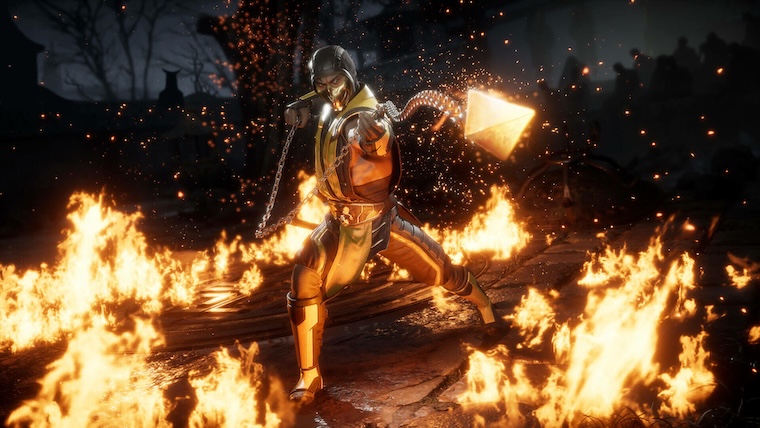
| Our Score |
☆
★
☆
★
☆
★
☆
★
☆
★
☆
★
☆
★
☆
★
☆
★
☆
★
|
| Platforms | PC, PS4, PS5, Xbox One, Xbox Series X/S |
| Year of Release | 2019 |
| Creator | NetherRealm Studios |
I remember the first time I launched Mortal Kombat 11. The cinematic intro alone had me hooked. It was like watching a blockbuster movie unfold, but I was in control.
This original Mortal Kombat game introduced a variation system for each character, which allows for more personalized playstyles. I spent hours experimenting with different combinations, finding the one that suited me best.
The story mode is another highlight. It is engaging and full of twists, especially with characters meeting their past selves. The voice acting and motion capture make every cutscene feel like a high-budget film.
However, I did miss the raw intensity of earlier titles like Mortal Kombat X. This installment felt more polished and refined, which was great, but I longed for that gritty edge.
Mortal Kombat 11 elevated the franchise with its deep customization, cinematic storytelling, and refined combat mechanics. It set a new standard for fighting games and remains a top pick for its balance of accessibility and depth.
Despite that, Mortal Kombat 11 stands out as one of the most complete and polished entries in the series. The gameplay is tight, the visuals are stunning, and the content is abundant. It’s a must-play for both newcomers and long-time fans.
2. Mortal Kombat X
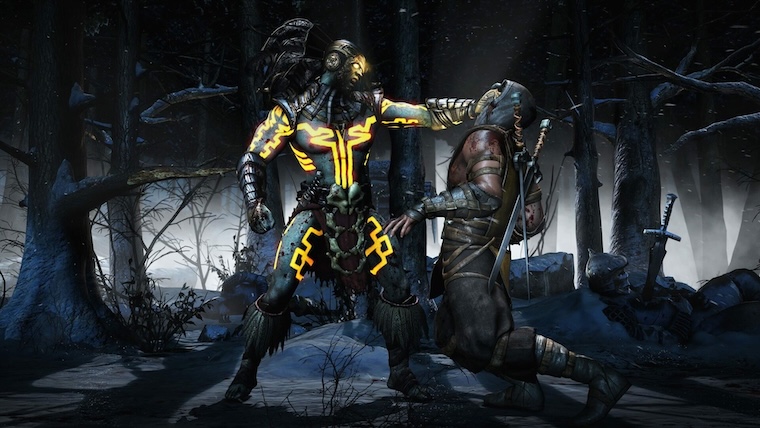
| Our Score |
☆
★
☆
★
☆
★
☆
★
☆
★
☆
★
☆
★
☆
★
☆
★
☆
★
|
| Platforms | PC, PS4, PS5, Xbox One |
| Year of Release | 2015 |
| Creator | NetherRealm Studios |
Mortal Kombat X (2015) felt like a bold step forward for the franchise. It introduces a fresh generation of characters, like Cassie Cage and Takeda, while also keeping the classic fighters we loved. The character variation system is a standout feature because it offers three distinct move sets per fighter. This added depth and replayability allow me to experiment with different playstyles, which I am a really big fan of.
The story mode spans 25 years and weaves new characters into the existing lore. It is engaging and adds emotional weight to the battles. The visuals are impressive, with detailed character models and dynamic environments that make each fight feel cinematic.
However, I did encounter some balancing issues, particularly with certain characters such as Cassie Cage and Erron Black. These moments were frustrating, but they didn’t overshadow the overall enjoyment.
Mortal Kombat X stands out for its innovative character variations, engaging story mode, and the introduction of new characters that revitalized the franchise. It successfully balanced the old with the new and managed to offer both nostalgia and fresh experiences for players.
Overall, Mortal Kombat X offered a compelling mix of classic elements and new innovations. It revitalized the series and kept me coming back for more.
3. Mortal Kombat 9
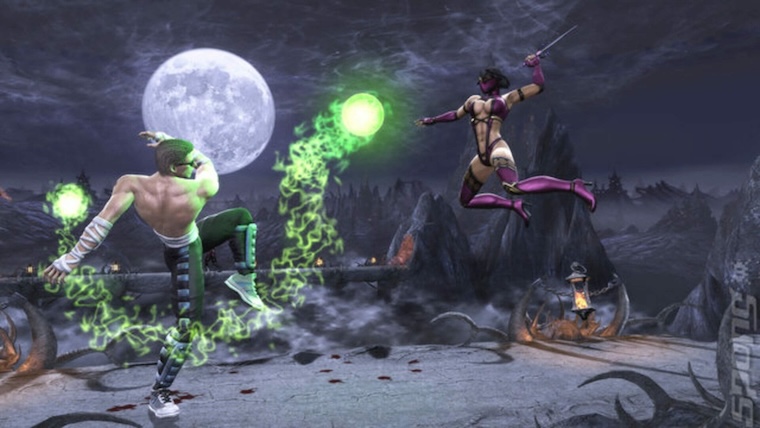
| Our Score |
☆
★
☆
★
☆
★
☆
★
☆
★
☆
★
☆
★
☆
★
☆
★
☆
★
|
| Platforms | PC, PS3, Xbox 360 |
| Year of Release | 2011 |
| Creator | NetherRealm Studios |
Mortal Kombat 9 (2011) marked a return to the franchise’s roots and delivered a raw and intense fighting experience. The game’s 2.5D fighting system, combined with modern graphics, brings a fresh yet nostalgic feel to the series. The story mode is quite straightforward and is driven by flashbacks that go over the early rivalry between the Earthrealm and the Outworld, which makes it one of the top adventure games out there.
The inclusion of the Challenge Tower and Test Your Luck modes provides additional layers of gameplay, which keep players entertained beyond the main story. The game’s brutal fatalities and X-ray moves showcase the franchise’s signature over-the-top violence, appealing to long-time fans.
Mortal Kombat 9 stands out for its return to classic 2D gameplay, engaging story mode, and the introduction of new features that enhanced replayability. It successfully blended nostalgia with innovation, making it a standout title in the Mortal Kombat series.
Overall, Mortal Kombat 9 successfully revitalized the series and offers both new and returning players a compelling and thrilling fighting game experience.
4. Mortal Kombat 1
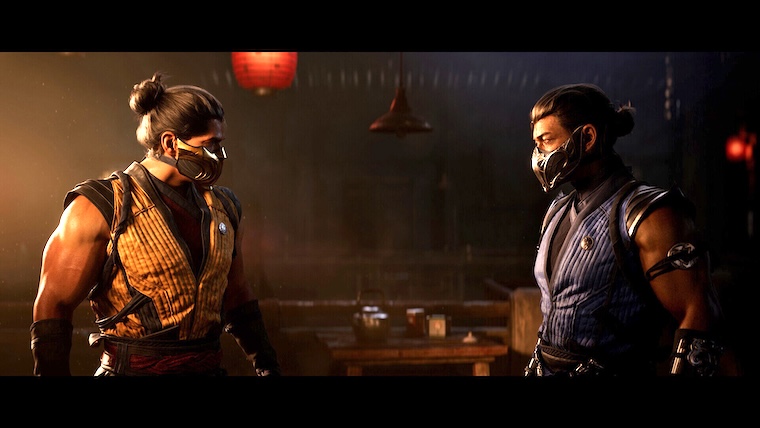
| Our Score |
☆
★
☆
★
☆
★
☆
★
☆
★
☆
★
☆
★
☆
★
☆
★
☆
★
|
| Platforms | PC, PS5, Xbox Series X/S |
| Year of Release | 2023 |
| Creator | NetherRealm Studios |
Mortal Kombat 1 is a notable co-op game that presents a bold visual upgrade, with graphics better than MK11. Also, Mortal Kombat 1 (2023) offered a fresh take on the franchise, but not without its challenges. The game’s visual upgrades were immediately noticeable. Character models and environments are crisp, and the overall presentation is polished. However, the shift in atmosphere from the darker tones of previous titles to a brighter aesthetic feels like a departure from the series’ gritty roots.
Gameplay-wise, the introduction of the Kameo system adds a layer of strategy, allowing players to call in assist characters during fights. While this is an interesting addition, it doesn’t fully compensate for the slower-paced combat and less intuitive combo system compared to its predecessors like Mortal Kombat 11.
The Invasions mode aims to provide additional content, but falls short in depth. Players express frustration over the repetitive nature of challenges and the limited rewards, leading to a sense of grind without substantial payoff.
Mortal Kombat 1 stands out for its innovative Kameo system, which adds depth to combat strategies. The game’s visual enhancements and reimagined story provide a fresh take on the classic franchise. While it may not appeal to all players, it offers a unique experience worth exploring.
Despite these shortcomings, Mortal Kombat 1 holds promise. With future updates and DLCs addressing its narrative and gameplay issues, it could evolve into a more compelling experience. For those invested in the series, it’s worth exploring, but tempered expectations are advisable.
5. Mortal Kombat: Deadly Alliance
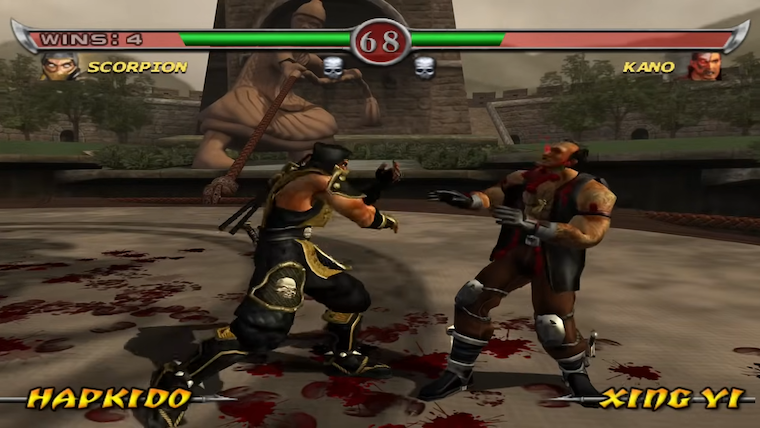
| Our Score |
☆
★
☆
★
☆
★
☆
★
☆
★
☆
★
☆
★
☆
★
☆
★
☆
★
|
| Platforms | PS2, Xbox, GameCube, PC, Game Boy |
| Year of Release | 2002 |
| Creator | Midway Games |
Mortal Kombat: Deadly Alliance (2002) was a pivotal moment in the series for me. It marked a significant shift from the traditional 2D fighting style to a more complex 3D combat system. Each character now has three distinct fighting styles, two martial arts and one weapon-based, which allows for deeper strategy and combo possibilities. This change makes the gameplay feel more dynamic and engaging.
The introduction of the Konquest mode is another highlight. It serves as both a tutorial and a story mode, providing background on each character and their motivations. This addition enriches the game’s narrative and offers a more immersive experience.
However, not everything is perfect. The game features only one Fatality per character, which feels like a step back compared to previous installments. Additionally, some of the new characters don’t resonate with me as much as the classics.
Mortal Kombat: Deadly Alliance stands out for its innovative 3D combat system, introducing multiple fighting styles per character. The addition of Konquest mode provided a richer narrative experience, making it a significant evolution in the series.
Despite these drawbacks, Deadly Alliance remains a standout entry in the Mortal Kombat franchise. Its innovative gameplay and deeper combat mechanics set it apart and laid the groundwork for future titles.
6. Mortal Kombat: Deception
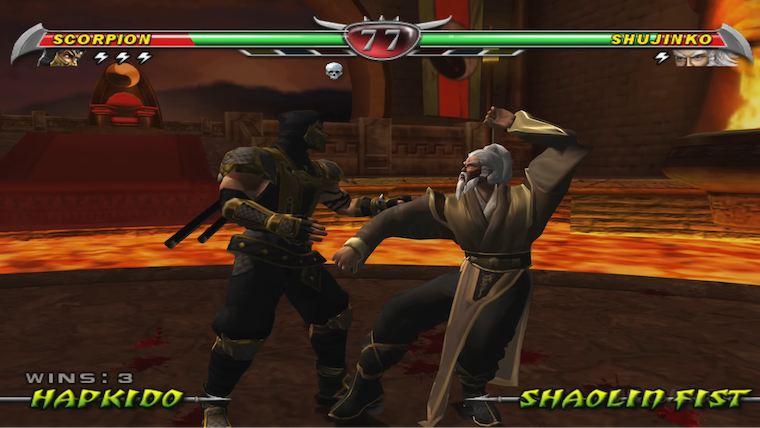
| Our Score |
☆
★
☆
★
☆
★
☆
★
☆
★
☆
★
☆
★
☆
★
☆
★
☆
★
|
| Platforms | PS2, Xbox, GameCube, PC |
| Year of Release | 2004 |
| Creator | Midway Games |
Mortal Kombat: Deception (2004) took the series in bold new directions. It wasn’t just about the fights anymore. The developers added new modes like Chess Kombat and Puzzle Kombat, which are surprisingly fun and add a fresh layer to the game. But for me, the real standout is the expanded Konquest mode.
Instead of just being a tutorial, it becomes an adventure. You play as Shujinko, traveling through different realms, meeting characters, and uncovering hidden lore. It feels like a mini RPG within the Mortal Kombat universe.
The story mode ties up the events from previous games, focusing on the rise of Onaga, the Dragon King. It is straightforward but satisfying, especially for long-time fans. The combat is fast-paced and gritty, staying true to Mortal Kombat’s roots. The addition of combo breakers allows for more strategic play, reducing the frustration of being stuck in long combos.
Mortal Kombat: Deception stands out for its innovative gameplay modes and expanded story elements. The Konquest mode added depth, and the combo breaker system made combat more strategic. It was a bold step forward for the series, offering both new experiences and familiar thrills.
However, the game wasn’t without its flaws. Some of the new characters like Dairou, Darrius, and Hotaru didn’t resonate with me, and the graphics, while impressive at the time, have aged. But these are minor issues in an otherwise solid game.
7. Mortal Kombat II
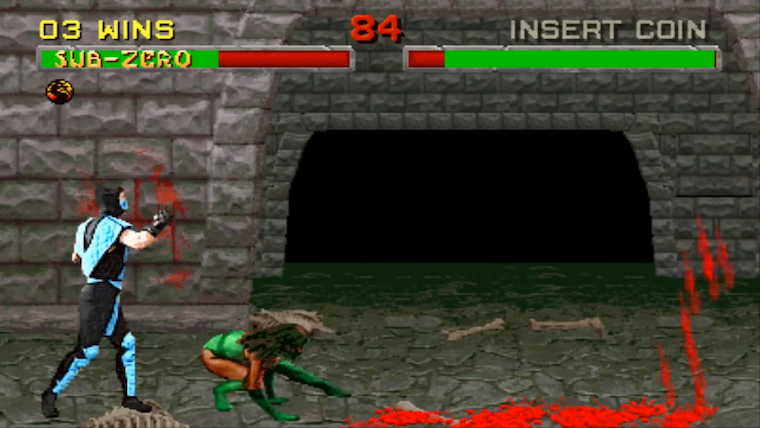
| Our Score |
☆
★
☆
★
☆
★
☆
★
☆
★
☆
★
☆
★
☆
★
☆
★
☆
★
|
| Platforms | Arcade, SNES, Genesis |
| Year of Release | 1993 |
| Creator | Midway Games |
Mortal Kombat II (1993) was a game-changer for me. I remember walking into the arcade, hearing the familiar “Toasty!” and seeing the vibrant character sprites. It felt like stepping into a new world.
The gameplay is smoother and more fluid than its predecessor (Mortal Kombat). Characters like Liu Kang and Sub-Zero had new moves that made fights more dynamic. The addition of Friendships and Babalities adds a fun twist to the usual Fatalities, which also shows the game’s playful side.
Mortal Kombat II stands out for its improved gameplay mechanics, memorable characters, and the introduction of unique finishing moves. It set a new standard for fighting games and remains a classic in the genre.
However, the game’s difficulty is a challenge. The AI is tough, and bosses like Shao Kahn are relentless. It took me multiple tries to defeat them, but the satisfaction of finally winning made it worth it.
8. Mortal Kombat: Armageddon
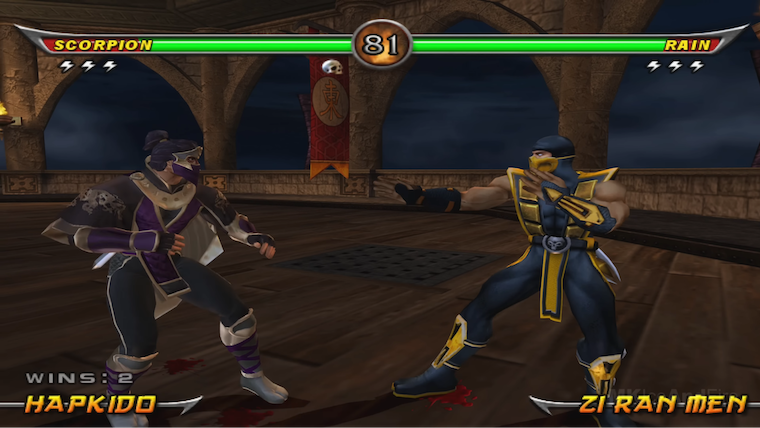
| Our Score |
☆
★
☆
★
☆
★
☆
★
☆
★
☆
★
☆
★
☆
★
☆
★
☆
★
|
| Platforms | PS2, Xbox, PC |
| Year of Release | 2006 |
| Creator | Midway Games |
Mortal Kombat: Armageddon (2006) was a bold attempt to bring everything together. The roster boasts over 60 characters, including fan favorites and obscure ones like Mokap and Khameleon. It is a fan’s dream come true. But, as I spent more time with it, I realized that quantity doesn’t always equate to quality.
The Kreate-A-Fighter mode is a standout feature. I spent hours customizing characters, tweaking their moves, and crafting backstories. It is a playground for creativity. However, the Kreate-A-Fatality mode, while innovative, felt lacking. The absence of traditional Fatalities makes the game feel incomplete. I missed the cinematic finishers that were a hallmark of the series.
The story mode, focusing on Taven’s quest, has potential but falls short. It felt rushed and didn’t provide the depth I had hoped for. The ending, leading into Armageddon, seemed anticlimactic.
Mortal Kombat: Armageddon stands out for its vast character roster and the introduction of the Kreate-A-Fighter mode. While it had its shortcomings, it showcased the franchise’s willingness to innovate and push boundaries.
Despite its flaws, Armageddon offers a lot. The expansive roster, creative modes, and nostalgic elements make it a memorable experience. It isn’t perfect, but it is a testament to the series’ ambition.
9. Mortal Kombat vs. DC Universe
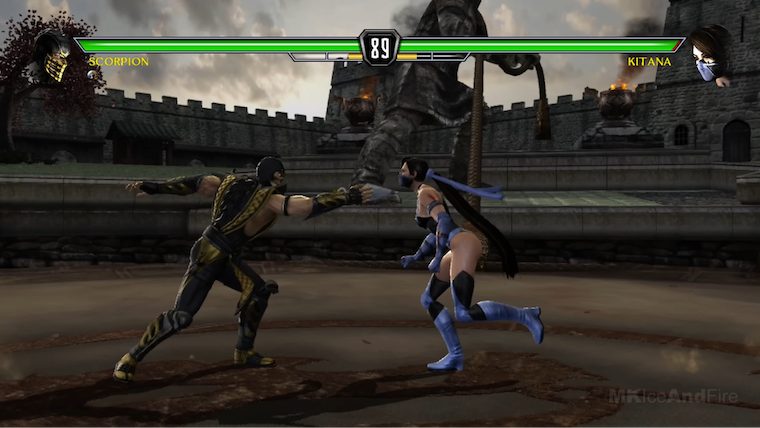
| Our Score |
☆
★
☆
★
☆
★
☆
★
☆
★
☆
★
☆
★
☆
★
☆
★
☆
★
|
| Platforms | PS2, PSP, Xbox 360 |
| Year of Release | 2008 |
| Creator | Midway Games |
Mortal Kombat vs. DC Universe (2008) was a game I approached with mixed feelings. The idea of pitting Mortal Kombat’s brutal fighters against DC’s iconic heroes intrigued me, but I wondered how they’d mesh. The result is a game that, while ambitious, feels like it couldn’t fully commit to either side.
The new fighting mechanics, like Freefall Kombat and Klose Kombat, add some novelty. Freefall Kombat allows characters to battle mid-air during a fall, which is visually striking but often disrupts the flow of the fight. Klose Kombat brings players into close-quarters combat, offering a more intimate fighting experience. While these modes are interesting, they sometimes feel more like gimmicks than integral parts of the gameplay.
The story mode, aiming to blend the Mortal Kombat and DC universes, has potential. It introduces Dark Kahn, a fusion of Shao Kahn and Darkseid, causing chaos in both realms. However, the narrative often feels disjointed, and the pacing is uneven. Some character arcs are underdeveloped, leaving me wanting more depth and cohesion.
A significant change is the toned-down violence. Mortal Kombat’s signature Fatalities are replaced with Heroic Brutalities for DC characters, which, while fitting their heroic personas, lack the impact of traditional finishers. This shift makes the game feel less intense compared to its predecessors.
Mortal Kombat vs. DC Universe stands out for its ambitious crossover, introducing unique fighting mechanics and a storyline that merges two iconic universes. While it faced challenges in execution, it remains a noteworthy attempt at blending distinct worlds.
Despite these issues, Mortal Kombat vs. DC Universe offers a unique crossover that fans of both franchises might appreciate. It isn’t the seamless blend I had hoped for, but it provides a different perspective on familiar characters.
10. Mortal Kombat 4
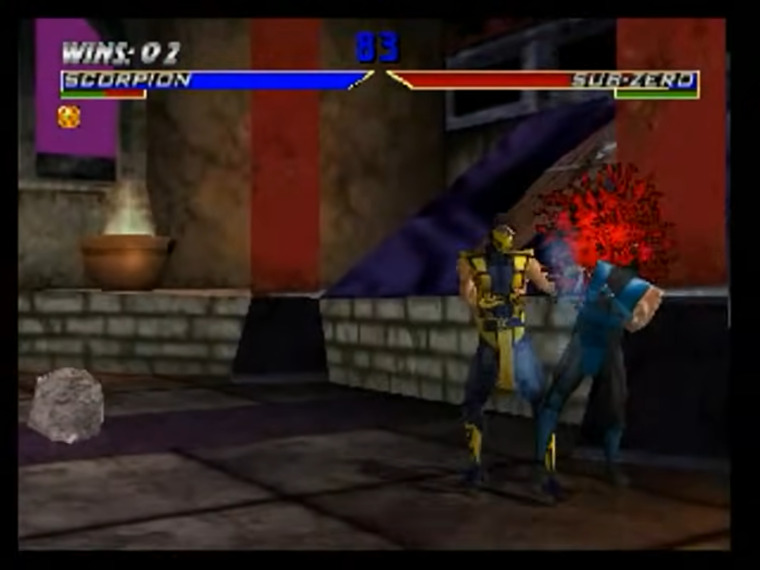
| Our Score |
☆
★
☆
★
☆
★
☆
★
☆
★
☆
★
☆
★
☆
★
☆
★
☆
★
|
| Platforms | PS2, PSP, Xbox 360 |
| Year of Release | 2008 |
| Creator | Midway Games |
Mortal Kombat 4 was a bold move for the franchise, stepping into the world of 3D. I remember the first time I saw it in the arcade; it was a spectacle. The characters were now rendered in 3D, and the arenas had depth. It felt like a new era for Mortal Kombat.
The addition of weapons is a highlight. Each character has a unique weapon, and being able to pick up and use your opponent’s weapon adds a layer of strategy. It is exciting to see how these new mechanics change the flow of combat.
However, the transition to 3D wasn’t without its challenges. The controls feel stiff, and the fluidity of the previous 2D games is missing. Some of the character animations are awkward, and the fatalities, while still brutal, lack the same impact as before. The game also suffers from technical glitches and awkward camera angles, which detract from the overall experience.
Despite these issues, Mortal Kombat 4 introduces new characters like Fujin, Jarek, and Shinnok, expanding the lore of the series. The story mode, while not as deep as some fans hoped, provides a backdrop for the battles. The addition of two-player team battles and tournament modes adds variety and replayability.
Mortal Kombat 4 stands out for its ambitious leap into 3D, introducing new gameplay mechanics and expanding the series’ universe. While it faced challenges in execution, it remains a significant entry in the Mortal Kombat franchise.
In hindsight, Mortal Kombat 4 was a stepping stone. It laid the groundwork for future 3D Mortal Kombat games, even if it didn’t fully hit the mark. For me, it was a memorable chapter in the series, showcasing the challenges and excitement of transitioning to a new dimension.
Our Verdict on the Best Mortal Kombat Games
After diving into all these Mortal Kombat games, I have to say, Mortal Kombat 11 stands out as the best choice for anyone wanting the most refined, accessible, and rewarding experience. The improved combat system, dynamic move sets, and cinematic story mode make it a standout entry that offers something for both new and long-time fans. I personally found the character customization and the story’s twists incredibly engaging since it offered a fresh take on familiar characters.
Many players, including myself, have appreciated how MK11 strikes the perfect balance between nostalgia and modern gaming mechanics. Its polished visuals, deep mechanics, and strong replay value make it hard to pass up.
If you’re looking for the ultimate Mortal Kombat experience, I highly recommend Mortal Kombat 11. It’s a perfect entry point and an excellent continuation for fans of the series.
FAQs
How many main Mortal Kombat games are there?
There are 11 main Mortal Kombat games in the core series, starting from the original Mortal Kombat (1992) to Mortal Kombat 11 (2019). Additionally, there are several spin-offs and reboots that expand the franchise.
What is the most liked Mortal Kombat game?
Mortal Kombat X is widely considered the most liked Mortal Kombat game. This is usually because fans believe it is the most technically superior.
In what order should I play Mortal Kombat?
You should play the games in release order: MK (1992), MK2, MK3, MK4, Deadly Alliance, Deception, Armageddon, MK (2011), MKX, MK11.Release order lets you experience the advances that the franchise has gone through over the years.
Which game is better than Mortal Kombat?
Many consider the Tekken series of fighting games to be better than Mortal Kombat. This is because it has a more popular professional scene, and it is considered to be a technically superior 2.5D fighting game.



